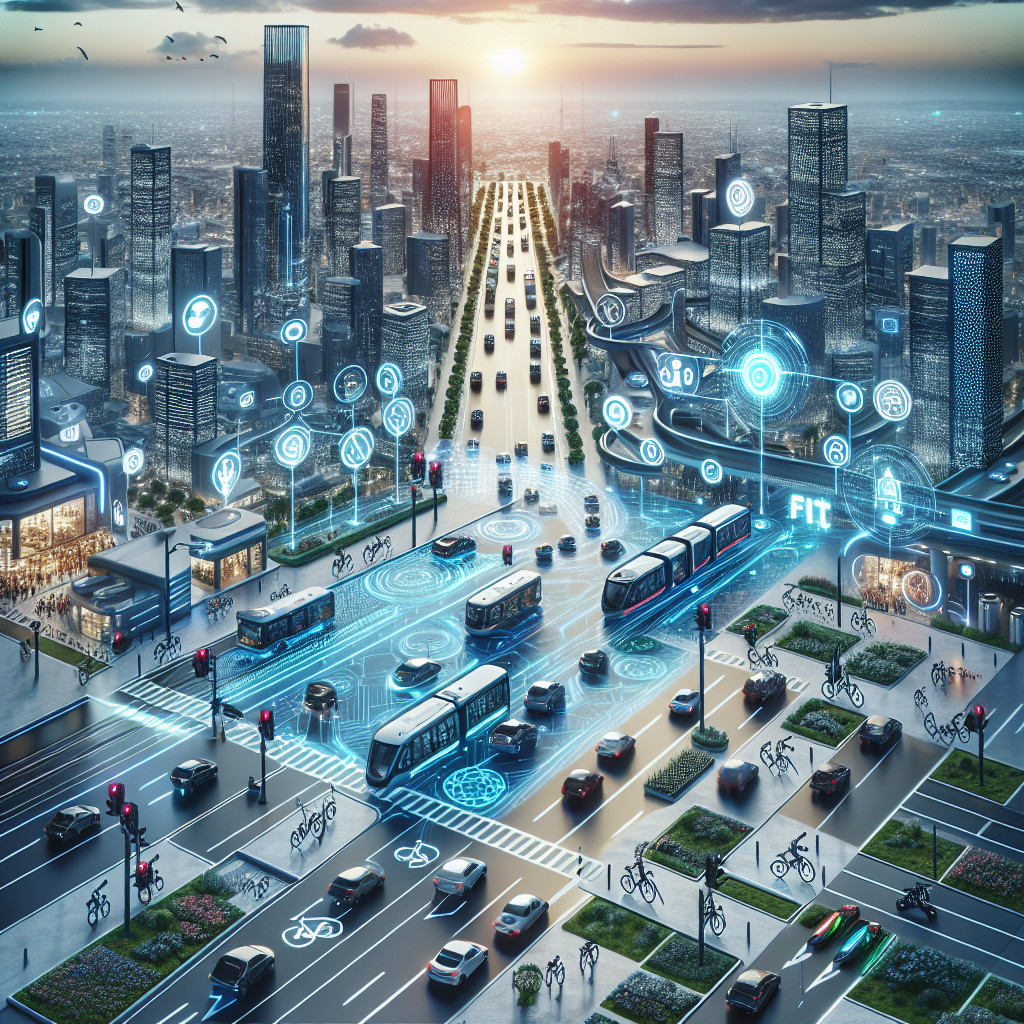Introduction
Artificial Intelligence (AI) has revolutionized various industries, including transportation and urban mobility. With the rise of smart cities and the need for sustainable transportation solutions, AI has played a crucial role in improving efficiency, reducing emissions, and enhancing the overall experience of commuters. In this article, we will explore the impact of AI on sustainable transportation and urban mobility, and how it is shaping the future of mobility in cities around the world.
Impact of AI on Sustainable Transportation
1. Traffic Management
One of the key areas where AI has made a significant impact on sustainable transportation is in traffic management. AI-powered traffic management systems can analyze real-time data from various sources such as traffic cameras, sensors, and GPS devices to optimize traffic flow, reduce congestion, and improve overall traffic efficiency. By using predictive analytics and machine learning algorithms, these systems can also anticipate traffic patterns and adjust signal timings accordingly to minimize delays and emissions.
2. Autonomous Vehicles
The development of autonomous vehicles is another area where AI is transforming sustainable transportation. Autonomous vehicles use AI technologies such as computer vision, sensor fusion, and machine learning to navigate roads, detect obstacles, and make decisions in real-time. These vehicles have the potential to reduce accidents, improve fuel efficiency, and optimize traffic flow by communicating with each other and with infrastructure systems. As autonomous vehicles become more mainstream, they have the potential to revolutionize urban mobility and reduce the reliance on traditional fossil fuel-powered vehicles.
3. Electric Vehicles
AI is also playing a crucial role in the adoption of electric vehicles (EVs) as a sustainable transportation solution. AI-powered software can optimize EV charging schedules, predict battery degradation, and recommend the most efficient routes for EVs. By analyzing data on driving patterns, weather conditions, and traffic congestion, AI can help EV owners maximize their driving range, reduce charging costs, and minimize environmental impact. Additionally, AI can assist in the development of smart charging infrastructure that can balance grid demand, reduce peak loads, and support the integration of renewable energy sources.
4. Public Transportation
AI is transforming public transportation systems by improving route planning, optimizing schedules, and enhancing the overall passenger experience. AI-powered algorithms can analyze ridership data, traffic patterns, and weather conditions to predict demand, adjust service levels, and optimize routes in real-time. By providing real-time information on bus and train schedules, delays, and disruptions, AI can help commuters make informed decisions and improve their overall transit experience. AI can also enable the development of on-demand microtransit services that offer flexible and personalized transportation options for commuters.
5. Ride-Sharing and Mobility-as-a-Service (MaaS)
AI is driving the growth of ride-sharing and Mobility-as-a-Service (MaaS) platforms that offer convenient and sustainable transportation options for urban dwellers. AI-powered algorithms can match riders with drivers, optimize ride-sharing routes, and predict demand to improve the efficiency of these services. By integrating different modes of transportation such as public transit, bike-sharing, and ride-sharing into a single platform, MaaS solutions can provide seamless and integrated mobility options for commuters. AI can also help reduce congestion, emissions, and parking demand by promoting shared mobility and encouraging the use of alternative transportation modes.
FAQs
1. How is AI being used to improve public transportation systems?
AI is being used to improve public transportation systems by optimizing route planning, scheduling, and service levels. AI-powered algorithms can analyze data on ridership, traffic patterns, and weather conditions to predict demand, adjust service levels, and optimize routes in real-time. By providing real-time information on bus and train schedules, delays, and disruptions, AI can help commuters make informed decisions and improve their overall transit experience.
2. How is AI helping in the development of autonomous vehicles?
AI is helping in the development of autonomous vehicles by enabling them to navigate roads, detect obstacles, and make decisions in real-time. Autonomous vehicles use AI technologies such as computer vision, sensor fusion, and machine learning to drive safely and efficiently. By analyzing data from sensors, cameras, and lidar systems, AI can help autonomous vehicles navigate complex environments, anticipate traffic patterns, and make split-second decisions to ensure passenger safety.
3. How is AI promoting the adoption of electric vehicles?
AI is promoting the adoption of electric vehicles by optimizing charging schedules, predicting battery degradation, and recommending efficient driving routes. AI-powered software can analyze data on driving patterns, weather conditions, and traffic congestion to help EV owners maximize their driving range, reduce charging costs, and minimize environmental impact. By supporting the development of smart charging infrastructure and grid management solutions, AI can accelerate the transition to electric mobility and reduce the reliance on fossil fuels.
4. How is AI being used to enhance ride-sharing and Mobility-as-a-Service (MaaS) platforms?
AI is being used to enhance ride-sharing and Mobility-as-a-Service (MaaS) platforms by optimizing ride-sharing routes, matching riders with drivers, and predicting demand. AI-powered algorithms can analyze data on traffic patterns, user preferences, and service availability to improve the efficiency and convenience of these services. By integrating different modes of transportation into a single platform, MaaS solutions can provide commuters with seamless and personalized mobility options that reduce congestion, emissions, and parking demand in urban areas.
Conclusion
AI has the potential to revolutionize sustainable transportation and urban mobility by optimizing traffic management, promoting the adoption of electric vehicles, enhancing public transportation systems, and improving ride-sharing and MaaS platforms. By leveraging AI technologies such as machine learning, computer vision, and predictive analytics, cities can develop smarter and more sustainable transportation solutions that reduce congestion, emissions, and reliance on fossil fuels. As AI continues to evolve and mature, we can expect to see further advancements in autonomous vehicles, electric mobility, and integrated mobility services that transform the way we move around cities and contribute to a more sustainable and efficient transportation system.

